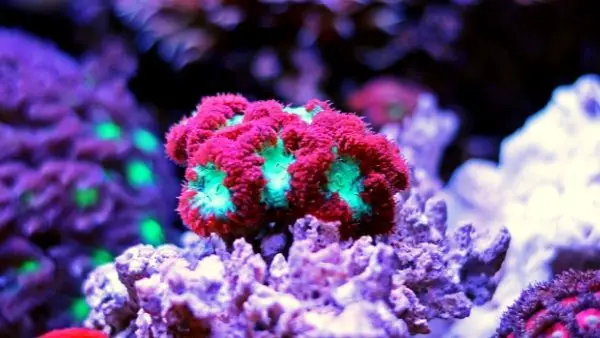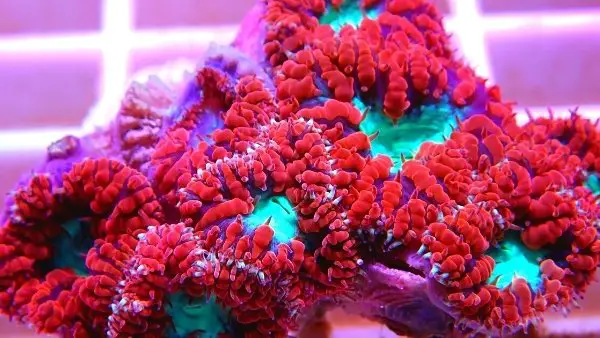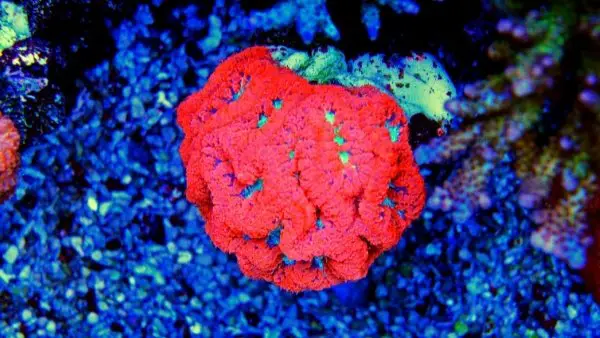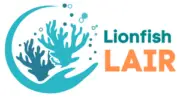Blastomussa Coral is one of the most popular corals in the hobby today, and is fantastic for beginners, despite being an LPS (Large Polyp Stony) coral. They sport large fleshy polyps that tend to do best with moderate tank lighting and low water flow.
This special coral is an awesome addition to any reef tank, coming in an abundance of awesome colors. The Blastomussa is perhaps the most unique coral out there and the LPS coral will form round, swollen discs when it grows and is incredibly suitable for beginners or hobbyists at any stage of their journey.

General Information
Originating from the Indo-Pacific, and more specifically the islands of the Indopacific, such as Fiji, Tonga, Solomon Islands, and the Great Barrier Reef, the Blastomussa also goes by the names of Blasto, Posy Coral, Branched Cup, Pipe, and even Pineapple Coral.
Quick facts:
- They are a part of the Blasto Mussidaes family.
- Often referred to by hobbyists as "Blasto Coral".
- Originates from Australia and is easily located and available online and in most stores.
- Blastomussa corals are often confused with other brain and mushroom corals.
- They are in the LPS category.
- You can literally be at any experience level with these corals, they are easy to care for and bring a lot to your aquarium.
Beginner Friendly and Peaceful
Regardless of being an LPS (Large Polyp Stony) coral, the Blastomussa is an incredibly beginner-friendly coral, they tend to have large fleshy polyps, and thrive within an environment with moderate lighting and low tank flow.
They are compatible with pretty much all aquarium inhabitants due to their peaceful nature, and the fact that their sting is not strong and will not hurt or penetrate through any of your fish community.
Because of this, it is advised to keep them away from other corals you may have in your reef aquarium, they are sometimes susceptible to being bullied by other corals meaning that they will not likely grow to the size they should do.
Energy Source and Food
Photosynthesis is the primary source of energy for this coral, through the zooxanthella within the coral tissue, they also do react well to being fed, and if you feed it enough nutrients then you can see an increased growth rate, especially if you feed them phytoplankton.
Comparison With Other Corals
It may be easy to confuse the Blastomussa Merletti and the Blastomussa Wellsi, the only difference between the corals is the polyp, and more specifically, the size of the polyp. The Merletti polyp is the much smaller of the two corals, much like a Zoanthid coral.

The Wellsi on the other hand is much bigger, resembling that of a rather large mushroom. It grows in fused, tubular clusters, but still in a similar manner to its close relative, the Blastomussa Merletti. Both types of coral species will require the same care and are equally as easy to care for, extremely beginner-friendly due to their low demands on lighting, feeding, and water flow.
Tank Setup and Dietary Requirements
Every marine creature has specific requirements, whether that is a fish, invertebrate, or coral.
Overview
- They do not have any specific predators, it is only really typical coral pests.
- They will require medium lighting.
- The water flow must also be medium.
- Where do you put Blasto Coral? In terms of tank placement, they will thrive either in the middle or the bottom level of your aquarium.
- They don't rely on feeding at all, however, if you can feed them meaty foods, and phytoplankton you should, as the nutrients will often lead to them growing large in size and also brighter in color.
- Their coloration is truly stunning, ranging from purple, pink, green, brown, red, and even “rainbow”.
- They are relatively slow growers, but growth can be encouraged with the right food and light exposure.
Parameters
The Coral will certainly thrive under any regular saltwater parameters, however, you need to make sure that you have a calcium reading of 400 ppm, which ensures that there is enough calcium within the water to gown its calcified skeleton.
Maintenance
Blastomussa Coral are great for all levels of experience due to their low maintenance and adaptability when it comes to changes in parameters. They are especially good for those who are moving from soft coral to hard coral (LPS).
They do not require much attention at all and once they have been acclimated to the tank's lighting, flow, and water parameters, they will grow with almost no effort from the aquarist.

Feeding and Growth
They are relatively quick growers, as mentioned previously - the more nutrients they receive, the quicker the process will be and the healthier the coral will be as a result, forming an almost dome shape.
Another awesome thing about this coral species is that they will spawn more, meaning you will likely see more polyps form over time. Just because they grow at a quicker rate than most, they are still not an invasive species and will not take over your aquarium, unlike some others that are more suited for experienced hobbyists.
Conclusion
Not only are these corals incredibly beautiful, but they are one of, if not the most hobbyist-friendly species out there, and will make a fantastic addition to any coral reef tank, especially if you have brightly colored fish to accompany them. For beginners, they are brilliant too and will require minimal work - which is pretty rare for most reef corals!
